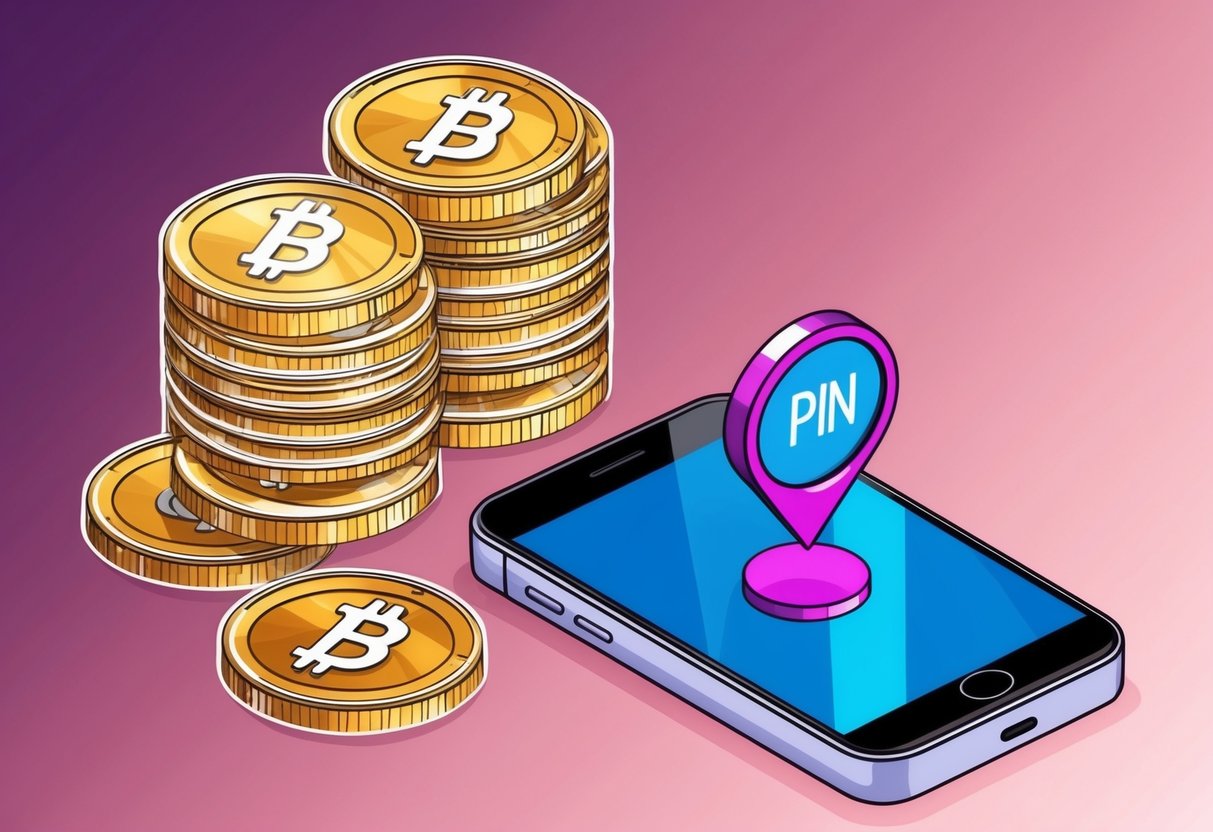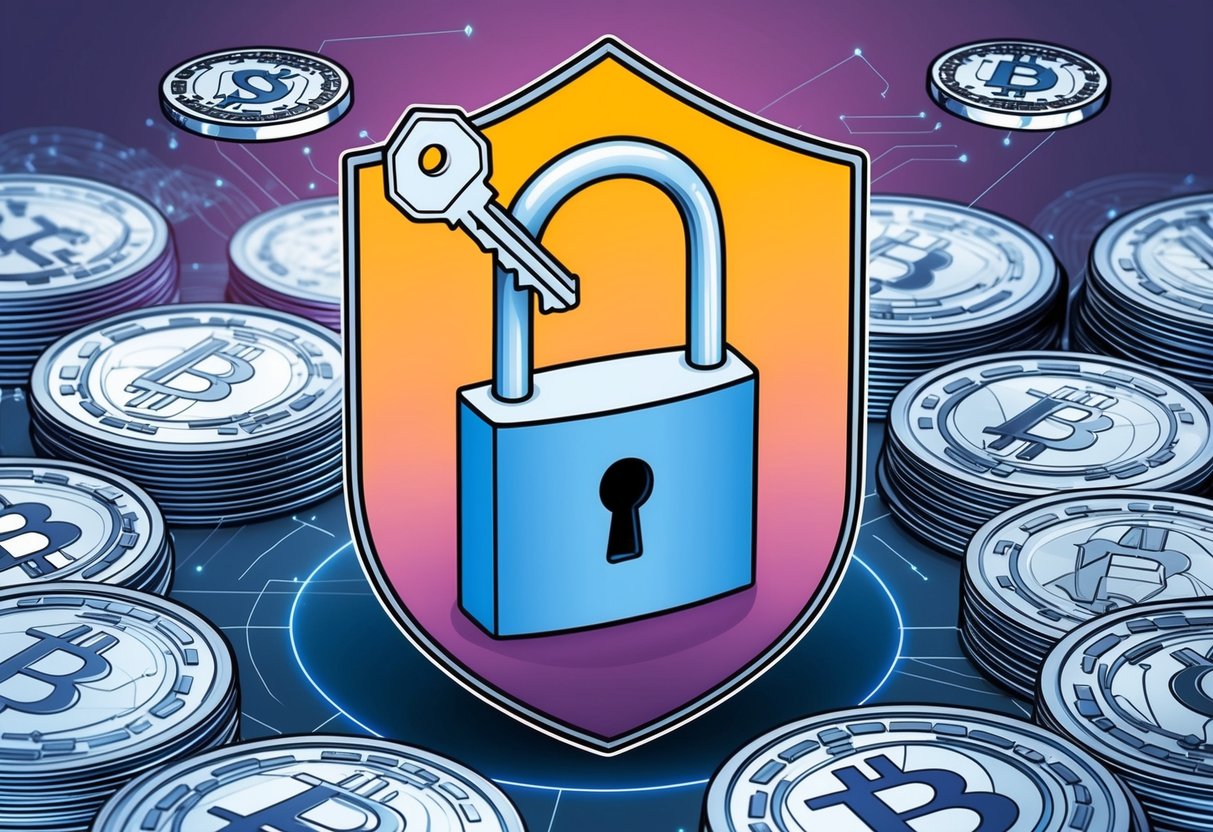
Looking for free crypto tokens? Pin AI’s Telegram bot offers an exciting way to earn $PIN tokens through simple tasks and games. Users can join the active Hi PIN airdrop by completing various activities to collect points.

These points will convert into actual $PIN tokens during the official distribution phase, making this a straightforward opportunity for crypto enthusiasts. The airdrop rewards participants for their contributions to the PIN AI ecosystem while building community engagement.
The process is user-friendly and designed to be accessible even to newcomers in the crypto space. By following step-by-step instructions and tracking task updates, participants can maximize their potential rewards while learning about this new project.
Today’s Airdrop Checker Even: Step-by-Step Claim:
🌐 Step 1: Visit the Official Airdrop Reward Page.
Dive into the action by heading to the official airdrop page, where all live events are waiting for you. Log into your account by connecting your wallet from any MOBILE DEVICE.
📱 Step 2: Use Your Mobile Wallet or Desktop
Eligibility checks are mobile or desktop! Grab your smartphone and ensure you’re using a wallet to participate.
💎 Step 3: Meet The Eligibility Criteria
Make sure your wallet isn’t empty or brand new—only active wallets qualify. If one doesn’t work, don’t worry! Try again with another wallet to secure your rewards. You can claim many rewards from multiple wallets, so try to use multiple wallets to increase your chance to claim.
💰 Step 4: Withdraw The Tokens
After signing the approval from your wallet, wait 5 to 10 minutes, and then congratulations! You will see a token claim in your wallet. You can easily exchange your tokens from SushiSwap, PancakeSwap, and many more.
What Are Pin to Earn Airdrops?

Pin to Earn airdrops represent an innovative approach in the cryptocurrency space where users earn tokens by completing specific tasks through dedicated platforms. These programs combine engagement, community building, and token distribution in a gamified experience.
Definition and Purpose
Pin to Earn airdrops are cryptocurrency distribution programs that reward users with tokens (often called $PIN tokens) for completing various tasks and activities. Unlike traditional giveaways, these airdrops require active participation through platforms like Telegram bots or dedicated apps.
The primary purpose is twofold: to build a community around a new cryptocurrency project and to distribute tokens to potential users who demonstrate genuine interest. Projects like PIN AI use this model to grow their user base while ensuring tokens reach engaged participants rather than passive collectors.
These programs typically track user activity through a points system, which later converts to actual cryptocurrency tokens during the official distribution phase. The structure helps projects create an active ecosystem before their token officially launches.
How Pin to Earn Differs from Traditional Airdrops
Traditional airdrops usually distribute tokens based on simple criteria like wallet ownership or holding specific cryptocurrencies. Pin to Earn models, however, require ongoing engagement and task completion.
Users must actively participate by playing games, completing social tasks, or engaging with the project’s community. For example, the Hi PIN airdrop by PIN AI requires users to interact with their Telegram bot and complete various activities to earn points.
This approach filters out passive participants and rewards those who demonstrate genuine interest in the project. It creates a more qualified user base compared to traditional airdrops where recipients might immediately sell tokens without engaging with the ecosystem.
The engagement-first approach also helps projects gather valuable user data and build community momentum before their official launch. This creates a stronger foundation for long-term growth.
Key Benefits and Opportunities
Pin to Earn airdrops offer several advantages for both projects and participants. For users, these programs provide a free entry point into promising cryptocurrency projects without financial investment. They can earn valuable tokens by simply dedicating time and effort.
The gamified nature makes participation enjoyable rather than purely transactional. Users can earn additional points through bonus activities, referrals, or consistent engagement over time.
For projects, these airdrops help build an active community of informed users who understand the project’s value proposition. This creates stronger market positioning and potential price stability when tokens launch.
The model also allows projects to identify potential power users and ambassadors through engagement metrics. Those who participate most actively often become the strongest advocates for the ecosystem.
As market trends evolve, Pin to Earn models represent an important shift toward merit-based token distribution in the digital assets space.
How Pin to Earn Airdrops Work

Pin to Earn airdrops combine social engagement with blockchain technology to reward users for their participation. This innovative approach uses social media and peer-to-peer interactions to distribute tokens while expanding project awareness across multiple networks.
Earning Process Step-by-Step
The Pin to Earn process typically begins when users join a project’s Telegram group or other designated platform. After joining, participants must complete specific tasks to earn points or tokens.
Common steps include:
- Download the application – Users install the Pin AI Agent or similar app
- Complete verification – Verify identity through simple processes
- Participate in mining activities – Engage with the app regularly
- Complete social tasks – Follow accounts, share content, or invite friends
- Play simple games – Some airdrops include gamification elements
Many programs use a points system where different activities earn varying amounts. For example, inviting new users might earn more points than daily check-ins. The accumulated points later convert to tokens when the project launches officially.
Integration with Social Media Platforms
Pin to Earn airdrops heavily leverage social media for distribution and engagement. Telegram serves as the primary platform for many Pin AI and similar airdrops, offering direct access to community members.
Other important platforms include:
- Twitter/X – For following accounts and retweeting content
- Discord – For community engagement and task verification
- Instagram – For broader social reach
- TikTok – For video-based promotion tasks
Projects often require users to connect multiple social accounts to verify participation. This creates a cross-platform presence that expands visibility. The integration also enables tracking of social engagement metrics, allowing projects to reward more influential participants with bonus tokens.
Supported Blockchain Networks
Pin to Earn airdrops typically operate across several major blockchain networks to ensure accessibility and flexibility. Ethereum remains the most common network due to its widespread adoption and ERC-20 token standard.
Other supported networks often include:
- Bitcoin – For BTC-based rewards
- Base – Coinbase’s Ethereum L2 solution gaining popularity
- NEM – Known for its low-energy consensus mechanism
- Solana – Favored for high speed and low transaction costs
Many modern airdrops use cross-chain solutions that allow tokens to be claimed on users’ preferred networks. This flexibility helps projects reach wider audiences across the DeFi ecosystem. Smart contracts ensure transparent distribution and verification of user activities.
Peer-to-Peer Engagement
The social aspect of Pin to Earn models creates powerful peer-to-peer engagement that benefits both projects and participants. Users actively recruit friends and connections to join airdrops through referral systems.
Typical P2P elements include:
- Referral bonuses – Additional tokens for bringing new users
- Team tasks – Collaborative goals that require group participation
- Community competitions – Leaderboards rewarding top participants
These social mechanisms create organic growth for projects while fostering community formation. Users with larger networks can earn substantial rewards through their connections. The P2P model also helps projects identify influential community members who might become ambassadors or moderators.
Security and Best Practices for Participants

Staying safe while participating in Pin to Earn airdrops requires understanding key security protocols and implementing protective measures. These practices will help safeguard your digital assets and personal information from potential threats.
Choosing Secure Crypto Wallets
When participating in Pin to Earn airdrops, selecting the right crypto wallet is crucial. Hardware wallets like Ledger or Trezor offer superior security by storing private keys offline, away from potential hackers. These physical devices require manual confirmation for all transactions.
For more frequent airdrop participation, consider using reputable software wallets with strong security features. Look for wallets that offer:
- End-to-end encryption
- Regular security updates
- Open-source code that has been audited
- Backup and recovery options
Avoid storing large amounts of cryptocurrency on exchange wallets, as these are more vulnerable to attacks. Instead, use a combination of hardware wallets for long-term storage and secure software wallets for active airdrop participation.
Protecting Your Private Key
Your private key is the master access to all your crypto assets. Never share it with anyone, including customer support representatives from legitimate platforms. Legitimate companies will never ask for your private key.
Consider these protection methods:
- Split storage: Write down your recovery phrase on paper and store pieces in different secure locations
- Create a paper wallet: Generate offline for cold storage of sensitive data
- Use a password manager: Store related passwords and seed phrases
- Avoid digital storage: Don’t keep private keys in emails, cloud storage, or digital documents
Check for shoulder surfers when inputting sensitive information. Be cautious of any software that requests access to your private keys, as this could indicate malicious intent.
Enabling Multi-factor Authentication
Multi-factor authentication (MFA) adds an essential security layer to your crypto accounts. This system requires multiple verification methods before granting access to your wallet or exchange accounts.
Set up MFA on all platforms where you participate in airdrops by:
- Enabling two-factor authentication (2FA) using authenticator apps like Google Authenticator or Authy
- Adding biometric authentication when available (fingerprint or facial recognition)
- Setting up SMS verification as a backup, though it’s less secure than authenticator apps
- Creating unique, complex passwords for each platform
Never disable MFA for convenience. Even with minor inconvenience, the added protection significantly reduces unauthorized access risks. Update authentication apps regularly and keep backup codes in a secure location.
Recognizing Fraudulent Activities
Scammers often target airdrop participants with sophisticated schemes. Learn to identify red flags to protect yourself from fraudulent activities.
Common scam indicators include:
- Requests for upfront payments to receive airdrops
- Promises of unrealistically high returns
- Urgency-based messaging (“Limited time only!”)
- Poor grammar or unprofessional communication
- Fake websites with URLs that closely mimic legitimate platforms
Before participating in any airdrop, verify the project’s legitimacy through official channels. Check their social media accounts, community forums, and reputable crypto news sources. Be suspicious of unsolicited messages or emails about exclusive airdrop opportunities.
Always double-check wallet addresses before confirming transactions. Enable notifications for all account activities to quickly identify suspicious behavior. If something feels wrong, it’s better to miss an opportunity than lose your assets.
Frequently Asked Questions
Airdrops generate many common questions from cryptocurrency enthusiasts. These questions cover eligibility, claiming processes, safety measures, tracking methods, scam detection, and tax considerations.
What are the eligibility requirements for participating in cryptocurrency airdrops?
Eligibility requirements vary widely between projects. Most airdrops require users to hold a minimum amount of a specific cryptocurrency in their wallet.
Some projects, like PIN AI, require participation in their ecosystem through activities on platforms like Telegram. Others may require users to complete KYC (Know Your Customer) verification.
Many airdrops target users who have interacted with related protocols or who hold tokens from partner projects. Early supporters and active community members often receive priority.
Can you explain the process for claiming airdrop tokens?
The claiming process typically begins with an announcement from the project team. Users must verify the announcement comes from official channels to avoid scams.
Most airdrops require connecting a compatible wallet to the project’s website. This might involve signing a message to prove ownership without revealing private keys.
Some projects use snapshot dates to determine eligibility, while others require completing specific tasks. After verification, tokens are either automatically sent to the user’s wallet or become available to claim through a designated interface.
What precautions should be taken when participating in an airdrop event?
Never share private keys or seed phrases with anyone, including project teams. Legitimate airdrops will never ask for these.
Use separate wallets for airdrops rather than your main holdings wallet. This limits potential security risks to only a small portion of your assets.
Verify all links and announcements through official project channels. Scammers often create fake websites and social media accounts that look nearly identical to official ones.
Research the project thoroughly before connecting any wallet. Check their team, roadmap, and community feedback to assess legitimacy.
Are there any tools or platforms to track upcoming airdrop opportunities?
Dedicated websites like airdrops.io maintain comprehensive lists of active and upcoming airdrops. These platforms often verify projects for legitimacy.
Crypto portfolio trackers and news aggregators often include airdrop alerts. These tools can notify users about opportunities relevant to tokens they already hold.
Social media platforms, especially Twitter and Discord, serve as valuable resources for discovering airdrops. Following credible crypto influencers and joining project communities provides early information.
Specialized airdrop alert services send notifications about new opportunities, though these should be carefully vetted for reliability.
How can one differentiate between legitimate airdrops and potential scams?
Legitimate projects have transparent teams with verifiable backgrounds. Anonymous teams require extra scrutiny, though some legitimate projects start this way.
Established projects typically don’t ask users to send cryptocurrency to receive airdrop tokens. “Send to receive” schemes are almost always scams.
Genuine airdrops have clear purposes beyond distributing tokens, such as building communities or rewarding early adopters. The token should serve a function in the project’s ecosystem.
Excessive promises of value or guaranteed returns signal potential scams. Legitimate projects focus on utility rather than token price speculation.
What are the tax implications of receiving airdrops in different jurisdictions?
Most tax authorities consider airdrops as taxable income at the fair market value when received. This creates tax liability even without selling the tokens.
Documentation is essential for accurate tax reporting. Record dates, amounts, and values of all received airdrops using blockchain explorers or tracking tools.
Some jurisdictions may treat airdrops differently from mining or staking rewards. In the United States, the IRS generally considers airdrops as ordinary income.
Tax rules vary significantly by country, and regulations continue to evolve. Consulting with a tax professional who specializes in cryptocurrency is advisable for proper compliance.
Leave a Reply